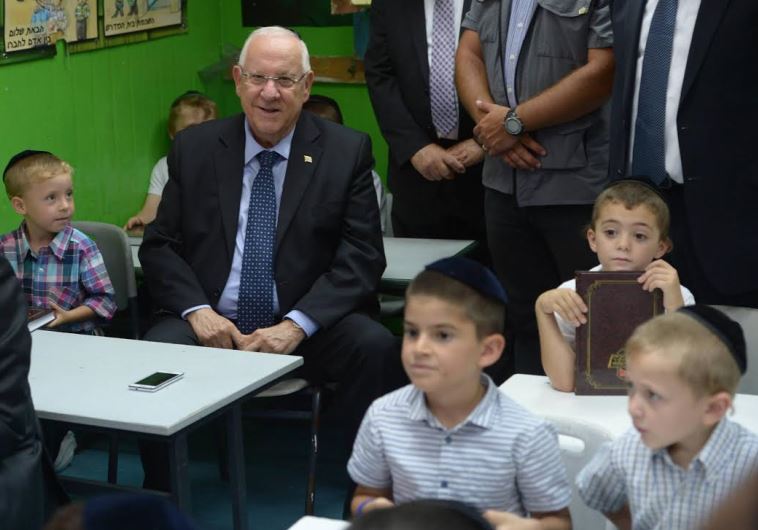Gov't launches education initiative for minority integration
They will speak to colleagues in haredi, secular and Arab schools, as well as to people in religious and secular settlements.
 Rivlin at Haredi school in Jerusalem, August 16, 2015(photo credit: AMOS BEN GERSHOM, GPO)Updated:
Rivlin at Haredi school in Jerusalem, August 16, 2015(photo credit: AMOS BEN GERSHOM, GPO)Updated: